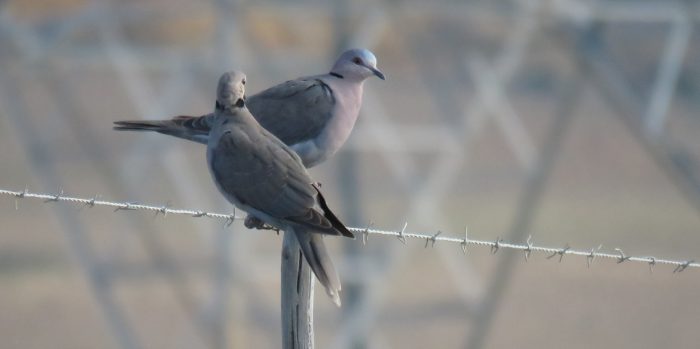Birds and barbed wire – by Les Underhill
Barbed wire was invented in America in the 1860s, and used to keep cattle inside of camps, or outside of crops.
Within a few decades, farmers in the old Cape Colony had found a new use for barbed wire. In 1892, a civil servant in the Colony’s Department of Agriculture designed a vermin-proof fence that utilized closely strung and interlaced strands of barbed wire. He reasoned that if this were widely adopted, it would make the extermination of jackals and other “vermin” much easier. The farmers lobbied the government, and they were even provided with financial assistance to build jackal-proof fencing. Within the first decades of the 1900s, the “Fencing Movement”, aided and abetted by Parliament through an assortment of “Fencing Acts”, had successfully transformed the natural landscapes of South Africa into a patchwork mosaic of fields and camps.
A century has passed, during which jackals and other vermin have remained as big a problem as they ever were. But the barbed wire fences remain. Some are carefully maintained and others have rotten to rust. But they have undoubted been the catalyst that, over the past century, has altered the way South Africa looks.
Barbed wire along roads takes us back to its original purpose: keeping animals inside the camps. Here, barbed wire fences are both the bird photographer’s curse and the photographer’s blessing. The barbed wire either gets in the way, or it provides a perch out in the open!

This Southern Red Bishop is easy out on the fence line

Take away the out-of-focus barbed wire, and this would be reasonable image of a Capped Wheatear

These Red-eyed Doves are using the fence to soak up the early morning sun

The fenceline and dropper are almost conspiring to hide the distinguishing feature of the Cape Longclaw

Being flat-footed on the dropper is probably more comfortable than curled up feet on the wire for the Common Fiscal

Cape Weaver hiding, unsuccessfully, behind the wire

This Cape Bulbul has its right foot too close to the sharp end for comfort

The Speckled Pigeon is too large to hide behind the wire

